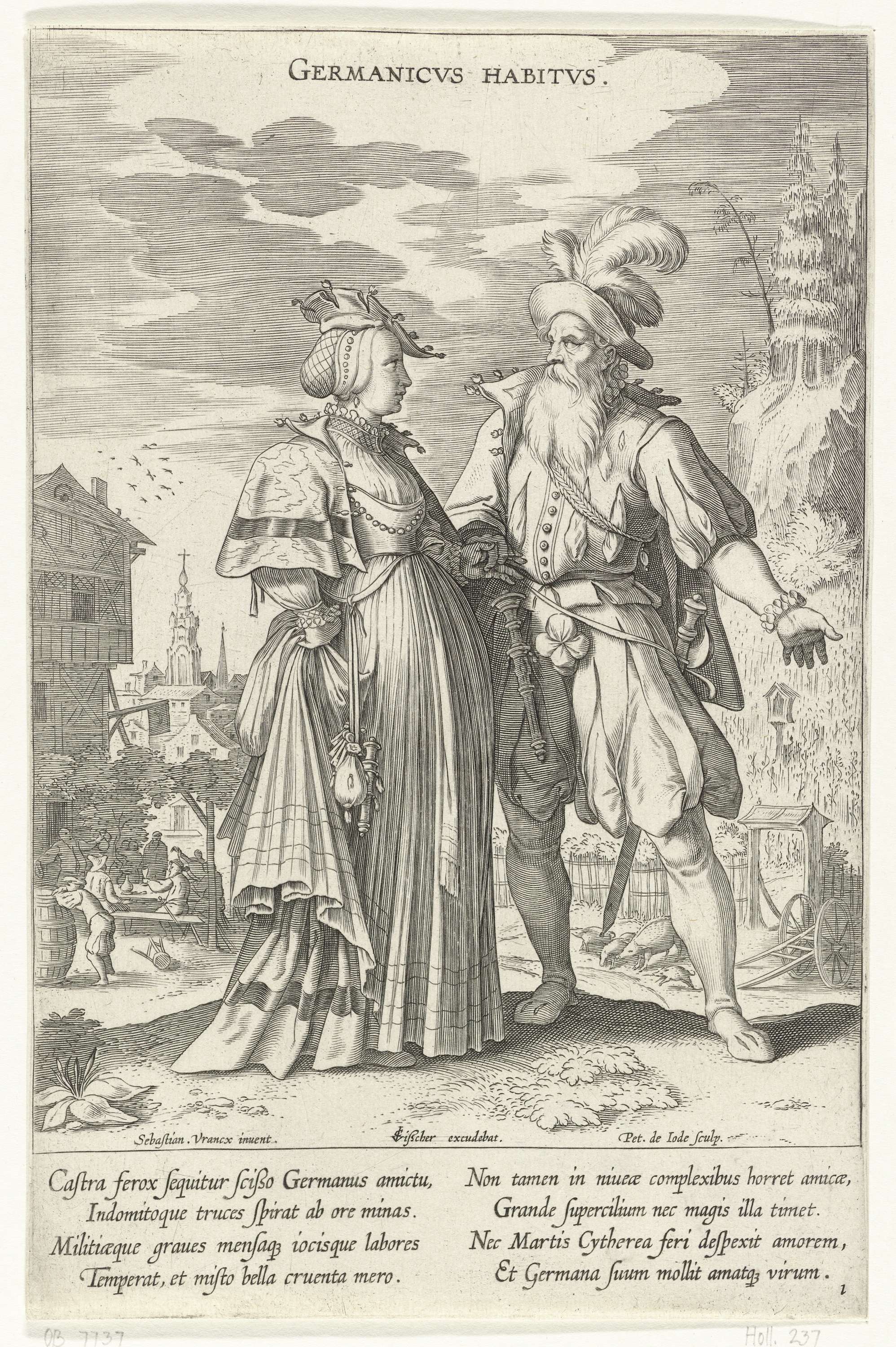
Pieter de Jode I, after Sebastiaan Vrancx, "German Costume" from Variarum Gentium Ornatus, engraving, c. 1605-1610
Thursday, May 11, 2017 - 4:00pm
Jaffe 113
Dissertation Defense - Heather Hughes, "Clothing as Culture: Delineating National Character in Costume Prints, c. 1600-1650"
At the turn of the seventeenth century, European printmakers began issuing single-sheet series portraying how people dressed in different parts of the world. These works are only briefly acknowledged in artists’ monographs—if such studies exist—or treated summarily in studies of fashion illustration, where their aims are insufficiently differentiated from those of fashion plates. This dissertation investigates the emergence and didactic functions of costume prints produced between 1600 and 1650, reframing them as artifacts of an era when clothing was considered the primary visual indicator of cultural difference. Collected in the albums of connoisseurs, affixed to the walls of alehouses, or incorporated into household objects, costume prints that pair national types with descriptions of customs and behaviors instructed viewers to read clothing as an of index of civility, morality, and status. The project addresses the interplay between images and inscriptions, parallels with period texts, and the varied modes of reception. To acknowledge the fluid boundaries of early modern print culture, it encompasses a range of artists, audiences, and regions, chiefly the Low Countries, England, and France.
Arranged chronologically and according to the geographic scope of each costume series, the dissertation traces how Europeans’ increasing knowledge of global sartorial diversity precipitated an intensified preoccupation with the role of dress in their own societies. In three chapters, the project considers how Pieter de Jode’s series of European costumes draw from the representational strategies of illustrated voyage accounts and from the principles of antiquarianism, cosmography, and geography; explores how allegories of the Twelve Months and the Four Continents rely on the premise of an inextricable bond between appearance and character to rank the peoples of the world; and examines the divergent attitudes toward luxury in English society by contrasting the demonization of French fashion in popular satires with Wenceslaus Hollar’s sensuous depictions of women’s attire. Through these studies, Clothing as Culture situates costume prints in the ongoing process of self-awareness about the capacity of clothing to constitute individual and collective identities in early modern Europe.

